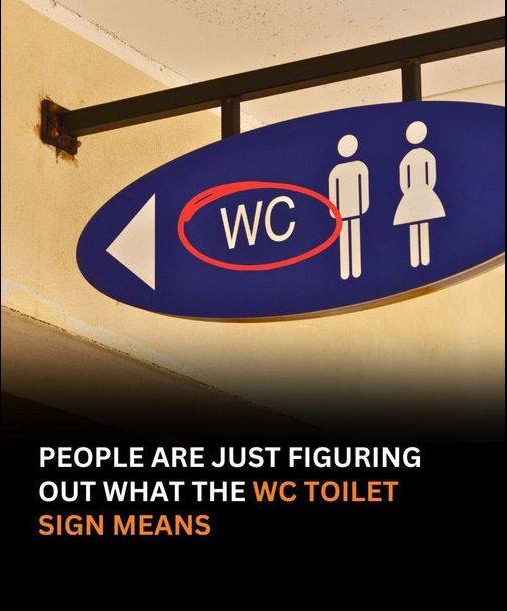It’s surprising how many people are just now discovering what the abbreviation “WC” really means when they see it on restroom signs. While Americans are used to calling it a restroom, bathroom, lavatory, or even jokingly referring to it as the throne, the letters “WC” remain a common, though often misunderstood, label in many public spaces.

Despite being visible in airports, hotels, and various establishments around the world, a lot of people have simply accepted the term without ever pausing to ask what those two letters stand for. That changed recently when a conversation on social media sparked curiosity and confusion in equal measure. One user admitted, “I’m so glad someone finally asked about it. I’ve been wondering what it meant for years.” Another added, “I can’t believe I’ve walked past WC signs my whole life and never knew what they actually stood for.” For anyone still in the dark, “WC” stands for “water closet,” a term that dates back to the early 1900s when indoor plumbing first became more widely available. At that time, homes already had rooms designated for bathing, usually with a tub but no toilet. So when toilets with running water were introduced, people needed a new space to install them. Since the bathroom was already taken, homeowners often placed the toilet in a small, private room—basically a closet outfitted with a toilet and water supply. That’s how the name “water closet” was born.
Over time, even as bathrooms evolved and toilets were integrated into full-sized bathrooms, the term “WC” stuck around, especially in Europe and other parts of the world. In today’s context, WC is simply another way to label a room that contains a toilet but no bathtub or shower. This was confirmed by plumbing resource site Plumb World, which stated that WC is commonly used in place of “bathroom” to clarify that the space is just for using the toilet, not for bathing.
@hullsome Basically every country uses WC to mark a bathroom. I didn’t know what WC meant for the LONGEST TIME. Talk about a conundrum, make sure you have some spare change too! #Bathroom #WC #America #American #European #Europe #Restroom #WaterCloset ♬ Hell To Da Naw Naw Naw – Bishop Bullwinkle
It’s an example of how language and function can merge in subtle ways and stay in use long after the original reason has faded. Interestingly, while the term is seen less often in the U.S., it’s far more common across Europe and in international settings. You’ll spot it in places like airports, hotels, train stations, and even on public building signs. Travelers from the U.S. may have noticed it while abroad and either figured it out through context or simply followed the sign without thinking too hard about it. In a recent viral TikTok, one content creator explained it in simple terms that helped clear things up for thousands of viewers. “Before indoor plumbing, people only had a room for bathing. Then plumbing was added, but they didn’t want to tear out the bath setup, so they just put the toilet in a closet. That’s where the term ‘water closet’ came from, and it stuck.” This explanation helped demystify something that many people had overlooked for years. As trivial as it may seem, the discovery has sparked a wave of fascination online. It’s a small but meaningful example of how much of our everyday environment we accept without question, and how language from another era still influences how we communicate basic things like where to find the nearest restroom. It also highlights the differences in terminology between American and European cultures, where “bathroom” often implies the presence of a bath or shower, while “WC” makes it clear that the room contains only a toilet. Now that the meaning is out in the open, it seems more and more people are appreciating the history behind the label. What was once a source of quiet confusion has now become a fun fact to share. So, the next time you spot a WC sign—whether in an airport, restaurant, or on vacation overseas—you’ll know exactly what it means and how it came to be. It’s not just a fancy or foreign-sounding label; it’s a piece of history that reflects the evolution of plumbing, home design, and language, all wrapped up in two little letters.





